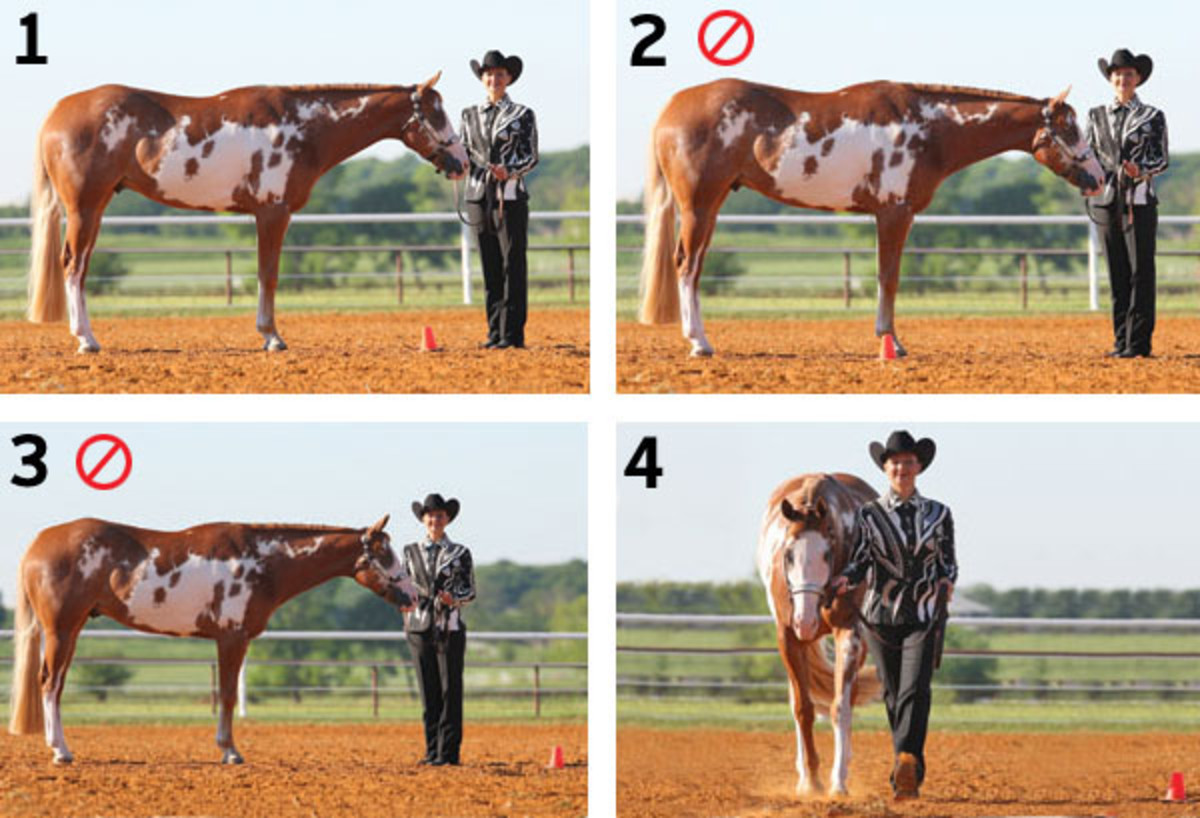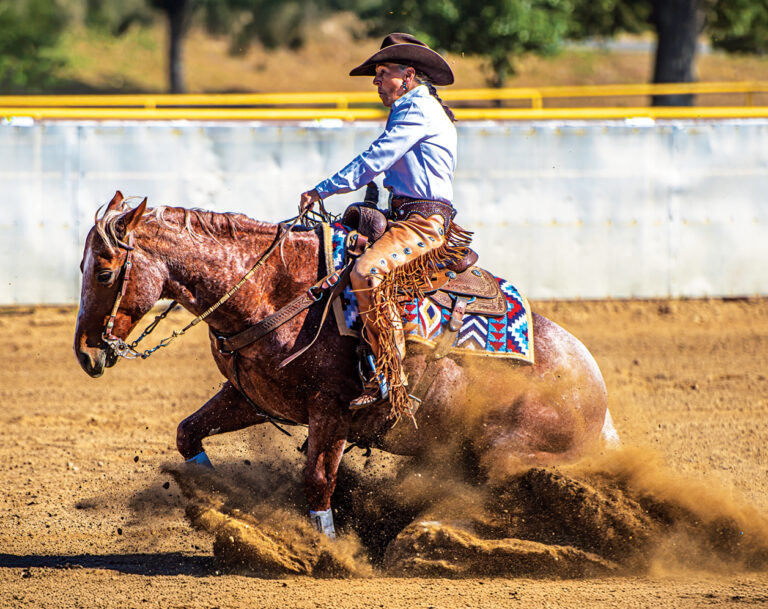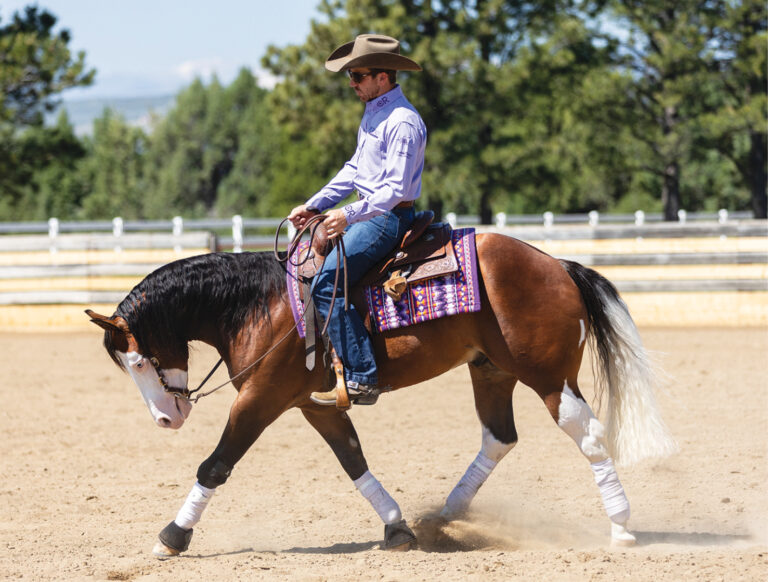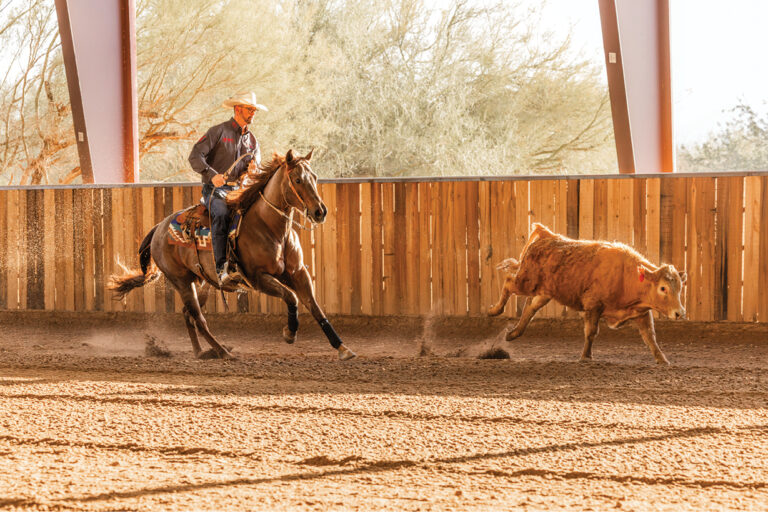Lesson Objective
If you compete: In showmanship, it’s critical to have spatial awareness of the pattern’s markers and to be aware of where the judge is standing as you travel through the pattern. This will help you to arrive at each cone in the proper position and move through the pattern error-free.
If you don’t: Control of your horse on the ground is a cornerstone of developing a good handle on your horse. Practice leading, turning, and backing according to markers (or use fence posts, plants, etc. for reference points) to reinforce your leadership.
Showmanship absolutely comes down to the little things, especially at the top levels of competition. Missing your markers even by a smidge can put your pattern askew, leading to major issues for the rest of the pattern—not just the single maneuver where your placement went off track.

1. When a pattern calls for you to start at a marker, as is the case here, this is the proper position—with your horse’s nose at the cone. This gives you more space between the starting point and your next marker, which puts you on the right track from the start of the pattern. Additionally, it shows that you can follow directions—the pattern says “start at A,” and you’re doing just that.

2. Here, the horse is past the marker—the horse is essentially already “in the pattern.” This is especially problematic in a smaller course. If you’re directed to trot from this marker to the next, you have a much shorter distance to achieve the gait and prepare to perform the next maneuver at the following marker.
3. In this case, the horse is too far behind the marker. The judge will score accordingly for your failure to start the pattern in the proper position. Not starting at the cone shows a lack of confidence and failure to pay attention to the details—both very important in showmanship. I will note that, if the pattern is especially small, you can fudge the starting point to a small degree, with your horse slightly behind the marker to give you enough room to strike off, but not to this degree.
4. When you set your horse up at the first cone, be sure to allow the necessary space for you and your horse to complete the 1¼ turn at B. This includes visualizing being a horse length away from cone B when you arrive with it on your left side and stopping with your horse’s hip at the cone. This will put you in proper alignment with the judge after the turn.
5. This pattern calls for a stop and 450-degree turn, then trot to the judge. If you stop with your horse’s nose at Cone B, you’ll be out of alignment to trot to the judge. You must stop with your horse’s hip at the marker, so that when you complete the 450, you’re in perfect alignment with the judge. This pattern’s challenge lies in your awareness of your horse’s hip being aligned with the judge while also being conscious of the cone.

6. Developing the timing to perfectly hit markers takes practice at home. Keep in mind that it takes a horse longer to depart and stop than it does a person, so you must cue for each element prior to the point at which you should be executing it. For example, as you approach cone B, plan to pass the cone before asking for the stop. Achieving this technical alignment requires extensive practice at home.
SARA SIMONS. A past APHA Leading Exhibitor and winner of more than 30 world titles, Sara Simons trains horses and coaches youth and amateur exhibitors from Simons Show Horses in Aubrey, Texas, which she owns with her mother, Andrea, and sister, Jana. She holds judges’ cards with APHA, NRHA, and NSBA.




